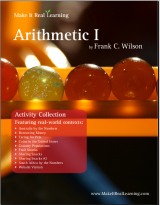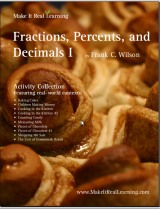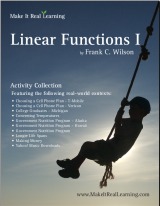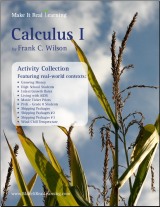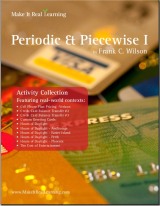The Story of an Experiment
This experiment in math teaching was done in the 1930s by by L. P. Benezet, and the main gist of it was that formal arithmetic studies were delayed until the latter half of 6th grade. Instead, the instruction concentrated on "teaching the children to read, to reason, and to recite - my new Three R's."
They also were taught about numbers they encountered in their reading materials, about time, about measuring units, estimation, and coins. Finally in 5th and 6th grade they also learn skip-counting. Formal arithmetic, meaning paper-and pencil work with addition, subtraction, multiplication, and division using a textbook began in latter half of 6th grade and continued till 8th grade.
The experiment was a huge success. Mr. Benezet compared the children's abilities in the experimental classroom to those of the traditional classrooms, and every time the "experimental" children were able to reason out word problems correctly, whereas those taught traditionally just stumbled all around, trying to find some formula to use.
Maria's comments
I find this story very interesting and I've read it before. I can't say that approach wouldn't work better than "traditional math" even in today's world. Maybe it would! Those kids were taught to reason AND they were also taught some basic math skills, just without the use of mechanical formulas. So, they learned to think and reason it in their heads.My guess is that such an approach would be even better if it was accompanied with some, what you might call, formal, instruction in math, BUT very much avoiding the idea that you use some formula that the teacher gives you "on a platter".
For example, in the experiment the kids were supposed to learn the numbers they saw in books and learn the page numbers such as 76 and 293. But, I wonder if this would have resulted in quicker/better understanding of number system had they been taught explicitly about hundreds, tens, and ones (the place value). Then again, we don't know how exactly the teachers explained those- maybe they did explain them in a very good way.
One of my instructors in university often mentioned the idea of school math being "announcement math" or "announced math". It's announced from a higher authority, without giving kids much in the way of justification, or the opportunity to find the truths themselves and thereby understand them deeper.
I do try to avoid that in the elementary part of math. In fraction studies, I refrain from giving "formulas" for fraction addition or division or simplification until kids have had a lot of experience with "doing" it with the fraction pictures. And even then the formula can be like a "sideline" that is mentioned in passing. I don't want to even deal with LCMs and GCFs when it comes to fraction math in elementary grades.
In general I always try to justify the math and let children experience and understand it on a conceptual level.
As regards to the experiment, they wanted kids to learn reasoning by the usage of good books and reading a lot. Then, when their brains were trained to a certain point, arithmetic was studied from books.
Reading a lot of books and learning reasoning is definitely a good way to go. But, I feel that mathematics, when taught right, can also have a part in this "training the mind" process and learning reasoning. It is very well suited to that if it is taught well during the elementary years - having the emphasis on thinking skills and concepts, not just memorizing formulas.

